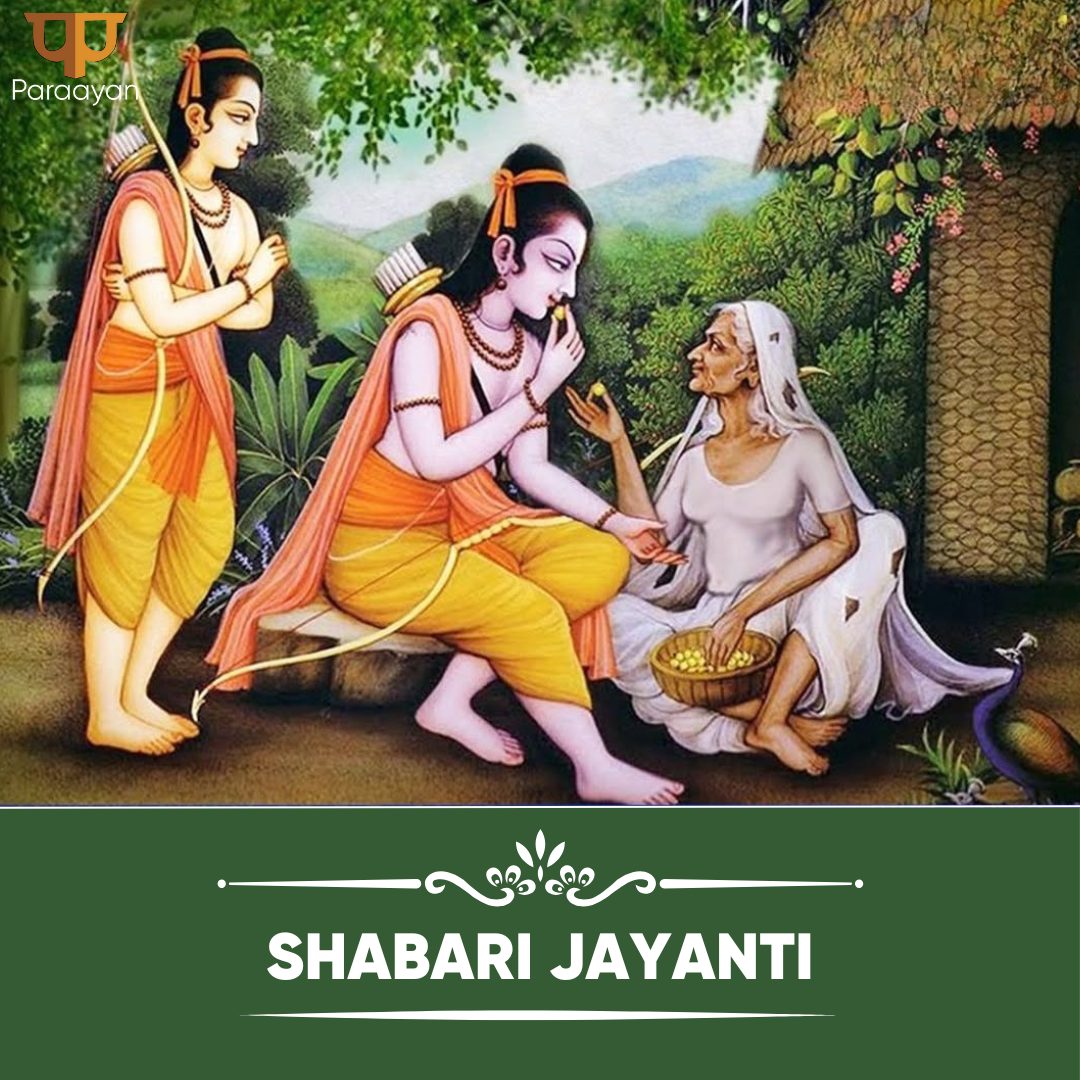Discover Why Shabari Jayanti is Celebrated on Different Dates in North and South India, Based on the Variations Between the North Indian and Amanta Lunar Calendars.
In honour of Mata Shabari, a devoted disciple of Lord Rama, a significant Hindu feast known as Shabari Jayanti is celebrated. It is observed annually on Krishna Paksha Saptami, the seventh day of the waning moon phase. It is celebrated during the month of Magha in Gujarat, Maharashtra, and the southern Indian states, and during the month of Phalguna in North India. But it happens on the same day in both calendars.
What Shabari Jayanti Means
Mata Shabari’s steadfast devotion to Lord Rama is well-known.She was a tribal woman who spent her life waiting for his arrival. According to the Ramayana, she lived in the ashram of Sage Matanga and performed daily rituals in his service. Her narrative emphasises the value of unadulterated devotion over social standing, money, or caste.
Her most well-known life story involves giving Lord Rama half-eaten fruit. She sampled each fruit to assess its flavour before serving. Lord Rama welcomed them with open arms because of her devotion. This story highlights that the true measures of devotion are not expensive presents but rather integrity and faith.
Shabari Jayanti 2025 Date & Timings
| Date | Tithi Begins | Tithi Ends | Hindu Month |
|---|---|---|---|
| March 15, 2025, Saturday | 02:45 AM, March 15 | 01:32 AM, March 16 | Phalguna (North India) / Magha (South India) |
The Mata Shabari Legend
In a tribal village, Mata Shabari was born. She aspired to achieve spiritual enlightenment despite coming from a lower caste. She ultimately arrived to Sage Matanga’s ashram after leaving her family in pursuit of a guru. She joined the sage’s school and dedicated her life to service and dedication.
Sage Matanga promised Shabari that Lord Rama will pay her a visit before departing from his earthly body. She gathered fruits for him and kept the ashram spotless for years in anticipation of his arrival. She joyfully greeted Lord Rama and Lakshmana when they eventually arrived. She tasted the berries to make sure they were sweet before offering them to him. She was blessed by Lord Rama, who also recognised her great dedication.
Rituals and Observances
Devotees celebrate Shabari Jayanti with prayers and rituals. People wake up early, take a holy bath, and visit temples dedicated to Lord Rama. Special pujas and bhajans are organized in many places. The following rituals are commonly observed:
- Devotees observe a day-long fast, eating only fruits or simple vegetarian meals.
- Temples conduct special prayers and recitations from the Ramayana.
- Many people read or narrate the story of Mata Shabari to understand her devotion.
Advantages of Shabari Jayanti Observation
Observing Shabari Jayanti is said to provide spiritual advantages in Hinduism.
- Those who seek true devotion in their lives pray on this day for spiritual growth.
- Worshipping Mata Shabari is seen to aid in overcoming both societal and individual constraints.
- People are motivated to pursue the road of humility and commitment after reading or hearing her tale.
- Giving meals to those in need on this day is seen as extremely auspicious.
How Shabari Jayanti Should Be Celebrated
The primary audience for Shabari Jayanti is Lord Rama worshippers. People congregate for religious activities in temples and houses during celebrations. Visiting temples devoted to Lord Rama and Mata Shabari is one popular method to commemorate.
- Organizing bhajans and Ramayana recitations at home or in temples.
- Performing pujas with offerings of fruits, flowers, and sweets.
- Reading about Mata Shabari’s life and discussing its lessons.
- Feeding the poor or distributing food as an act of service.
The mantra for Shabari Jayanti
It is thought to be advantageous to recite mantras honouring Lord Rama and Mata Shabari on this day. “Sri Ram Jai Ram Jai Jai Ram” is one mantra that is frequently chanted.
It is said that this mantra promotes inner strength, commitment, and serenity. It is said at least 108 times by devotees during prayers.
Conclusion
Shabari Jayanti serves as a reminder that love knows no bounds. Sincerity and faith are more significant than customs or social standing, as demonstrated by Mata Shabari’s life. Prayers and unselfish service on this day promote spiritual development and inner serenity.





